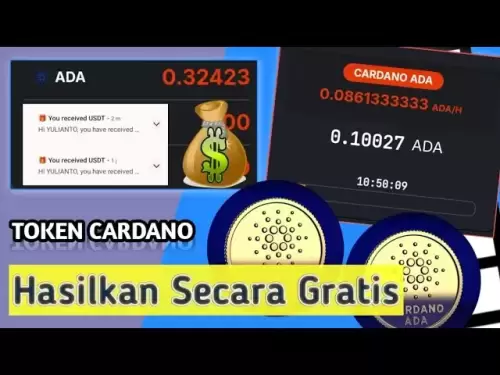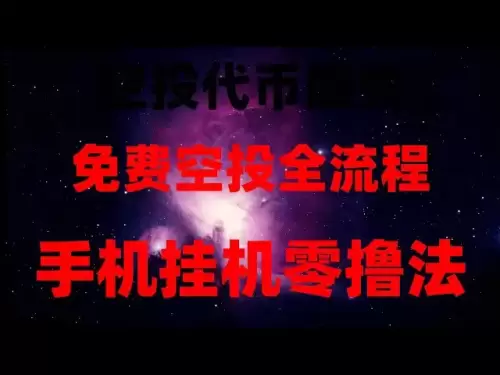 |
|
 |
|
 |
|
 |
|
 |
|
 |
|
 |
|
 |
|
 |
|
 |
|
 |
|
 |
|
 |
|
 |
|
 |
|
Cryptocurrency News Articles
RWA Is Really Hot Right Now. Let's Dismantle the Model of US RWA Pioneer Ondoto
May 16, 2025 at 12:06 pm
At the moment, RWA is really hot. From the Hong Kong Web3 Carnival in early April to the recent Web3 lawyer circle, everyone is talking about RWA.

At the moment, RWA is really hot.
From the Hong Kong Web3 Carnival in early April to the recent Web3 lawyer circle, everyone is talking about RWA. It is not without reason. After all, RWA is a more reliable and secure way to “issue coins”.
A few days ago, Lawyer Mankiw talked with everyone about China's new RWA projects, such as “Mankiw Research | Decoding China's Mainland Characteristics RWA: Practical Characteristics, Risk Analysis and Optimization Path”, and also shared with everyone how to play current RWA, such as “Mankiw | In the divided Web3 world, there are at least three types of RWA”.
However, if we want to talk about the precedents and leaders of RWA, we have to turn our attention to the United States. The most representative one is probably Ondo. In particular, the U.S. Securities and Exchange Commission (SEC) met with it in the past two days to discuss the compliance issuance of tokenized securities, which really gave Ondo another big S on its report card.
Therefore, in this article, Attorney Mankiw will talk to you about how RWA works in the United States based on Ondo’s RWA model.
Ondo RWA model dismantling
As for why Ondo is known as the leading RWA project in the industry, attorney Mankiw believes that the most important point is that when most projects are still thinking about “what real assets to use to issue tokens for financing”, Ondo has already moved assets such as U.S. Treasury bonds and money market funds onto the chain and integrated them into the DeFi gameplay.
Take the Ondo US Dollar Yield Token (USDY) for example. The real assets behind it are short-term US Treasury bonds and bank deposits, which means:
First, the asset has real income support. USDY is essentially a yield-based stablecoin, and investors can enjoy the income from US bonds or bank deposits every day;
Second, transparency and security are guaranteed. The underlying logic of the asset, such as custody, auditing, and profit distribution, still follows the compliance standards of traditional finance.
In addition, USDY adopts a bankruptcy isolation structure, and the reserve assets are completely separated from the issuing entity. In the event of an extreme situation, investors have priority in claiming the reserve assets. In addition to USDY, Ondo also issued OUSG, which is anchored to the US short-term Treasury bond fund, and its logic is similar to USDY.
Therefore, attorney Mankiw believes that, to some extent, Ondo is more like moving traditional financial products and liquidation mechanisms onto the chain, while ensuring that returns and risks are controllable, it also provides liquidity to assets on the chain.
Speaking of asset liquidity, we have to mention another product of the Ondo team, Flux Finance.
If issuing coins is only the first step of RWA, then how to make RWA tokens flow on the chain is the key to value-added. Therefore, Flux Finance was born, a lending protocol exclusively for RWA.
The difference between Flux and common lending protocols (Compound, Aave) is that it allows users to use these tokenized government bonds (such as OUSG) as collateral to borrow stablecoins such as USDC.
So, the question is: Treasury bonds are 100% securities. Will putting them in DeFi violate US regulations?
Ondo's solution is a licensing system: not everyone can use OUSG to borrow, you must pass a compliance review to ensure that you are a qualified investor. In other words, through a centralized review system, the disordered state of “any asset can be pledged” in DeFi is avoided, ensuring that on-chain lending activities are also carried out within a compliance framework.
This design is equivalent to setting a template for the compliance of RWA+DeFi on the entire chain in the future.
In fact, the gameplay of RWA is already a closed loop. However, Ondo is still expanding its territory in the field of RWA. Since RWA is so popular, all projects want to do RWA, so how to issue it and where to circulate it? There must be an infrastructure.
Yes, Ondo is also busy at the infrastructure level. It has built its own chain, Ondo Chain, which is tailor-made for RWA. The core gameplay is:
Such an architecture can not only meet the security and regulatory requirements of institutions, but also ensure the native openness of Web3.
Of course, with the infrastructure for everyone to issue coins, token standards must also be arranged. Therefore, Ondo announced plans to build Ondo Global Markets (Ondo GM) in 2024.
At the beginning, Ondo GM's design was relatively traditional, following the “brokerage instruction model”. Tokens represented investors' position instructions issued by traditional brokerages, and were generally permission-based and closed.
However,
Disclaimer:info@kdj.com
The information provided is not trading advice. kdj.com does not assume any responsibility for any investments made based on the information provided in this article. Cryptocurrencies are highly volatile and it is highly recommended that you invest with caution after thorough research!
If you believe that the content used on this website infringes your copyright, please contact us immediately (info@kdj.com) and we will delete it promptly.




























































